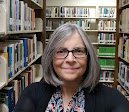I watched “The Age of Adaline” this weekend and it
was a pretty good movie overall except for one short piece of dialogue. In the
movie Adaline is going home with Ellis to meet his parents at their 40th
wedding anniversary and before they arrive his parents are discussing her.
Harrison Ford (father) “So what’s
the story with this girl? She works there?
Mom – “I’ve told you everything
Ellis told me.”
HF – “A beautiful girl… (big
pause here)…working in a public library?”
What the heck? Are the writers implying that only ugly girls
work at public libraries? Are they implying that there is something wrong with
working at a public library?
Mom – “Maybe
she likes books and silence.”
HF – “Or maybe she Googled him and found out about his
generous contribution and then worked her way into getting her hooks in him.”
Now this is where the writers again went wrong. As every
librarian knows, Google is not the best source for research. She works at the San Francisco
Public Library in the archives. She is used to scholarly research and has much
better databases to use if she really wanted to find out the dirt on her
boyfriend. She already knew that he had made his fortune in economic
forecasting and he is the board of director president for a philanthropic
organization. With a few clicks she would have this information in a flash from
a reputable source.
What is it
about librarians that make them an easy target? People hear that you are a librarian
and the comments begin. “It must be nice to just sit and read all day” or “Oh,
they still have librarians?” Librarians, for the most part, are stereotyped as introverted,
unattractive, timid, or as a know-it-all without social skills. The reality is
that librarians are just like everyone. Some are firecrackers that ignite the
thirst for knowledge and some quietly lead the way. What librarian stereotypes
have you heard? How can we change society’s image of us and do we want to?




